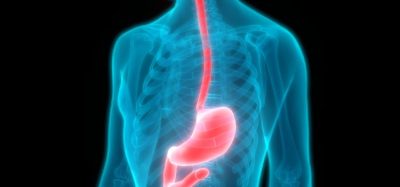FDA approves updated prescribing information for Tradjenta® (linagliptin) tablets
Posted: 17 August 2012 | | No comments yet
Boehringer Ingelheim Pharmaceuticals, Inc. and Eli Lilly and Company (NYSE: LLY) today announced the U.S. Food and Drug Administration (FDA) has approved a supplemental new drug application (sNDA) for Tradjenta® (linagliptin) tablets for use as add-on therapy to insulin.
TRADJENTA is a prescription medication used along with diet and exercise to lower blood sugar in adults with type 2 diabetes, and can be used as monotherapy or in combination with other commonly prescribed medications for type 2 diabetes, such as metformin, sulfonylurea, pioglitazone or insulin. TRADJENTA should not be used in patients with type 1 diabetes or for the treatment of diabetic ketoacidosis (increased ketones in the blood or urine).
The FDA’s decision is based on data from a 52-week, phase 3 trial demonstrating the efficacy of TRADJENTA in combination with insulin (with or without metformin and/or pioglitazone). The trial results showed adding TRADJENTA to insulin produced better glucose control than insulin alone, with similar incidence of hypoglycemia (low blood sugar) in both treatment groups.1 TRADJENTA belongs to a class of prescription medications called dipeptidyl peptidase-4 (DPP-4) inhibitors and is the first member of its class to be approved at one dosage strength (5 mg, once-daily).
Additionally, the FDA-approved label includes a clinical study in people with severe chronic renal impairment. Data from a 52-week, double-blind, randomized, placebo-controlled trial showed that use of TRADJENTA 5 mg plus other glucose-lowering therapies in this patient population provided a statistically significant improvement in glycated hemoglobin (HbA1c or A1C) compared to placebo (placebo-adjusted reduction of 0.7 percent).1
“Many people with type 2 diabetes taking insulin also require additional medication. With today’s FDA decision, TRADJENTA can be an effective add-on therapy with a demonstrated safety profile to help adult patients on insulin to improve their blood sugar control,” said John Smith, M.D., Ph.D., senior vice president for clinical development and medical affairs, Boehringer Ingelheim Pharmaceuticals, Inc. “TRADJENTA is the only once-daily, one-dose drug in its class without the need for dose adjustment regardless of declining renal function or hepatic impairment.”
TRADJENTA lowers blood sugar in a glucose-dependent manner by increasing incretin levels, which increase insulin levels after meals and throughout the day. Among many considerations when treating patients with type 2 diabetes, approximately 40 percent of individuals have some degree of renal impairment.2 With TRADJENTA, no dose adjustment is required regardless of declining renal function or hepatic impairment.1 To learn more about TRADJENTA and for full prescribing information visit: www.TRADJENTA.com, or call Boehringer Ingelheim Pharmaceuticals, Inc. at 1-800-542-6257.
About the Clinical Trials
Insulin add-on therapy trial
The efficacy of TRADJENTA as an add-on to basal insulin therapy was evaluated in a 52-week randomized, double-blind, placebo-controlled trial with the primary endpoint measured after 24 weeks. In this trial, a total of 1,261 patients with type 2 diabetes inadequately controlled on insulin glargine, insulin detemir, or NPH insulin were randomized to receive either TRADJENTA 5 mg once daily or placebo. The trial enrolled patients with a baseline A1C of greater than or equal to 7 percent and less than or equal to 10 percent, and included 709 patients with renal impairment, most of whom were categorized as having mild renal impairment (estimated glomerular filtration rate [eGFR] 60 to < 90 ml/min). A1C is measured in patients with diabetes to provide an index of blood glucose control for the previous two to three months. Patients were kept on a stable dose of insulin prior to and during the trial for the first 24 weeks. Additional background therapy combinations included basal insulin plus metformin (75.5 percent), basal insulin plus metformin and pioglitazone (7.4 percent), and basal insulin plus pioglitazone (1 percent).1
The primary endpoint of this trial was change in A1C after 24 weeks of treatment. At 24 weeks, TRADJENTA plus basal insulin demonstrated a placebo-adjusted reduction in hemoglobin A1C of 0.65 percent from a baseline A1C of 8.3 percent. The mean change in basal insulin dose after 24 weeks was +0.6 IU/day for TRADJENTA versus +1.3 IU/day for placebo.1 The differences in A1C seen between TRADJENTA and placebo were comparable for patients with or without renal impairment, and regardless of the severity of impairment. Overall the mean change in body weight from baseline to week 24 was similar in both treatment groups. The rate of hypoglycemia also was similar in both groups (21.4 percent, TRADJENTA and 22.9 percent, placebo) in the first 24 weeks of the study.1 The use of TRADJENTA in combination with insulin in patients with severe renal impairment was associated with a higher rate of hypoglycemia.
Renal impairment trial
The 52-week trial evaluated the efficacy and safety of TRADJENTA in patients (n=133) who had both type 2 diabetes and severe chronic renal impairment, defined as eGFR of less than 30 ml/min. In addition to the study medication, patients also received background antihyperglycemic therapy, which included insulin or any combination with insulin; sulfonylurea or glinides as monotherapy; and pioglitazone or any other glucose lowering medications excluding any other DPP-4 inhibitors. For the initial 12 weeks of the study, doses of background antihyperglycemic were kept stable. During the subsequent 40-week period, the doses of background antihyperglycemic therapy could be adjusted if certain blood sugar targets were not met. At baseline, 62.5 percent of patients were receiving insulin alone as background diabetes therapy, and 12.5 percent were receiving sulfonylurea alone.3
The primary endpoint of this study was the change from baseline in A1C after 12 weeks of treatment. After 12 weeks of treatment, TRADJENTA 5 mg provided statistically significant improvements in A1C with an adjusted mean change of -0.6 percent, compared to placebo. Efficacy was maintained for 52 weeks with an adjusted mean change from baseline in A1C of -0.7 percent, compared to placebo.1
Severe hypoglycemic events, defined as an event requiring the assistance of another person to actively administer carbohydrate, glucagon or other resuscitative actions, were reported in three (4.4 percent) TRADJENTA treated patients and three (4.6 percent) placebo-treated patients.3
Please report any unexpected effects or product problems to the Boehringer Ingelheim Drug Information Unit by calling 1-800-542-6257 (option 4).
What are TRADJENTA tablets?
TRADJENTA is a prescription medicine that is used along with diet and exercise to lower blood sugar in adults with type 2 diabetes.
TRADJENTA is not for people with type 1 diabetes or for people with diabetic ketoacidosis (increased ketones in the blood or urine).
Important Safety Information
Who should not take TRADJENTA?
Do not take TRADJENTA if you are allergic to linagliptin or any of the ingredients in TRADJENTA.
Symptoms of a serious allergic reaction to TRADJENTA are rash, raised red patches on your skin (hives), swelling of your face, lips, and throat that may cause difficulty breathing or swallowing. If you have any symptoms of a serious allergic reaction, stop taking TRADJENTA and call your doctor right away.
What should I tell my doctor before taking TRADJENTA?
Tell your doctor if you take other medicines that can lower your blood sugar, such as a sulfonylurea or insulin.
TRADJENTA may cause serious side effects, including low blood sugar (hypoglycemia). If you take TRADJENTA with another medicine that can cause low blood sugar, such as sulfonylurea or insulin, your risk of getting low blood sugar is higher. The dose of your sulfonylurea or insulin may need to be lowered while you take TRADJENTA.
Signs and symptoms of low blood sugar may include headache, drowsiness, weakness, dizziness, confusion, irritability, hunger, fast heartbeat, sweating, or feeling jittery.
Also tell your doctor if you take rifampin (Rifadin®, Rimactane®, Rifater®, Rifamate®), an antibiotic that is used to treat tuberculosis.
TRADJENTA may affect the way other medicines work, and other medicines may affect how TRADJENTA works.
Tell your doctor if you are pregnant or planning to become pregnant or are breastfeeding or plan to breastfeed.
Tell your doctor about all the medicines you take, including prescription and non-prescription medicines, vitamins, and herbal supplements.
What are the possible side effects of TRADJENTA?
The most common side effects of TRADJENTA include stuffy or runny nose and sore throat.
You are encouraged to report negative side effects of prescription drugs to the FDA. Visit www.fda.gov/medwatch or call 1-800-FDA-1088.
For more safety information, please see Patient Information and full Prescribing Information.
TJ CONS ISI August 14 2012
To learn more about TRADJENTA visit: www.TRADJENTA.com. For full prescribing information visit: http://bidocs.boehringer-ingelheim.com/BIWebAccess/ViewServlet.ser?docBase=renetnt&folderPath=/Prescribing+Information/PIs/Tradjenta/Tradjenta.pdf or call Boehringer Ingelheim Pharmaceuticals, Inc. at 1-800-542-6257.
Please report any unexpected effects or product problems to the Boehringer Ingelheim Drug Information Unit by calling 1-800-542-6257.
About Diabetes
Approximately 25.8 million Americans4 and an estimated 366 million people worldwide5 have type 1 or type 2 diabetes. Type 2 diabetes is the most common type, accounting for an estimated 90 to 95 percent of all diabetes cases.4 Diabetes is a chronic disease that occurs when the body either does not properly produce, or use, the hormone insulin.6
References
- Tradjenta® (linagliptin) tablets. Highlights of Prescribing Information. Initial US Approval: 2011.
- Plantinga LC, Crews DC, Coresh J, et al; for the CDC CKD Surveillance Team. Prevalence of chronic kidney disease in US adults with undiagnosed diabetes or prediabetes. Clin J Am Soc Nephrol. 2010;5:673-682
- Data on File.
- Centers for Disease Control and Prevention. National diabetes fact sheet: national estimates and general information on diabetes and prediabetes in the United States, 2011. Atlanta, GA: U.S. Department of Health and Human Services, Center for Disease Control and Prevention, 2011.
- International Diabetes Federation. Diabetes Atlas, 5th Edition: Fact Sheet. 2011.
- International Diabetes Federation. IDF Diabetes Atlas, 5th Edition: What is Diabetes? http://www.idf.org/diabetesatlas/5e/what-is-diabetes. Accessed on: July 27, 2012.









